Four great reasons for exercise through perimenopause and beyond
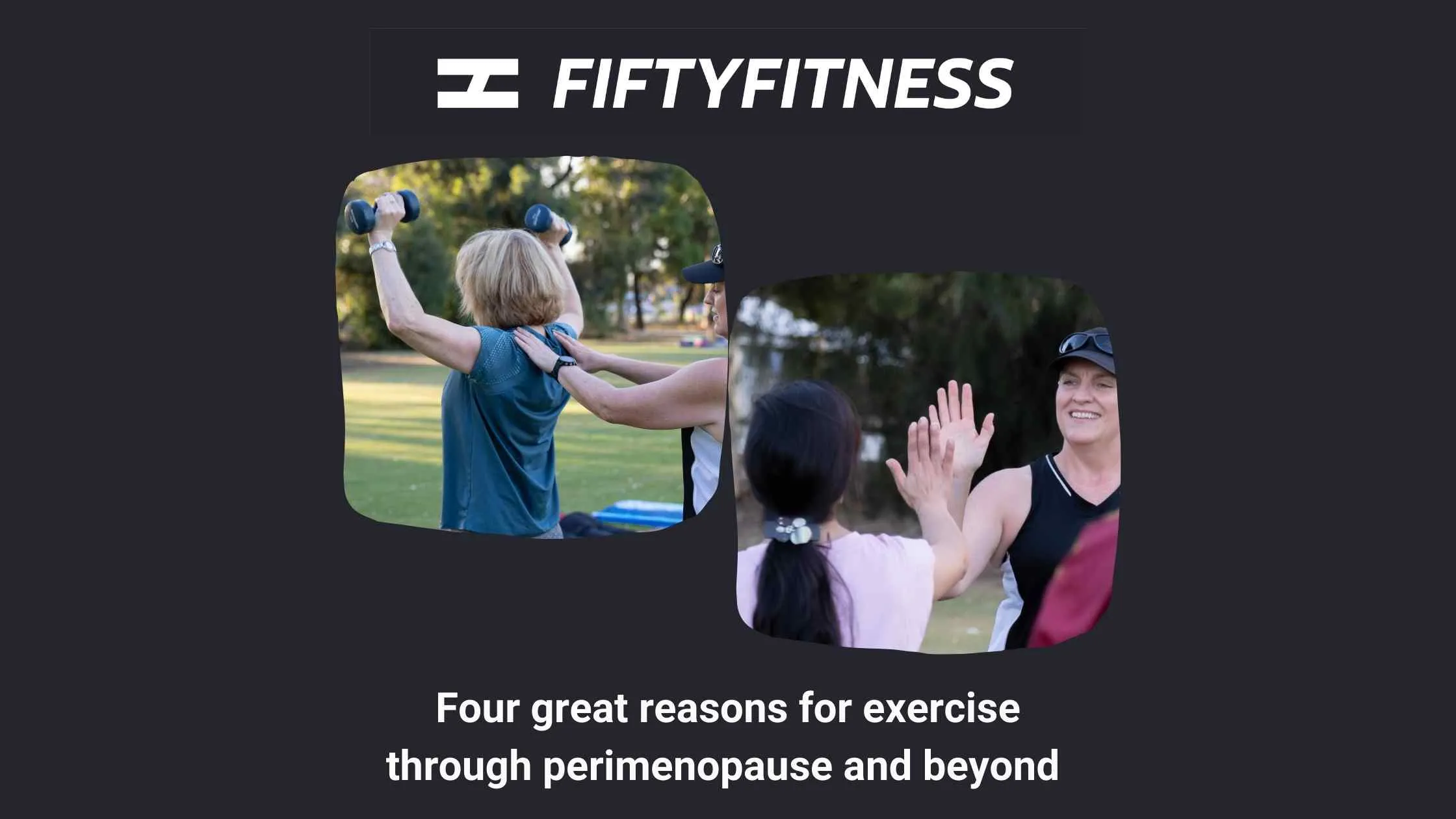
My top 4 reasons to exercise through perimenopause
In this article I’ll explain what I believe to be the 4 greatest benefits for women to keep exercising during perimenopause and beyond.
We might need to change things up, but it’s important that we don’t stop exercising.
And if you’re not currently exercising, it’s never too late to start or pick it back up again.
Firstly, what is perimenopause?
Perimenopause is the time of transition to menopause where oestrogen levels decline over an average period of 4 – 6 years.
It’s only called menopause after 12 months without periods.
Exercise during this time is critical
If you already know me, you will know that my main advocacy for exercise is feeling good.
Take the pressure off yourself and just do some movement that you enjoy.
While you’re exercising just to feel great and enjoy your life, without thinking about it you’ll be doing yourself some profound favours as you progress through perimenopause.
1. Osteoporosis
Osteoporosis is a condition that weakens the bones, making them more prone to fracturing.
It’s more prevalent in women because the decline in oestrogen that occurs during perimenopause affects our collagen production, and collagen is a component of bone.
Having a fracture with minor trauma is the first sign of osteoporosis for many women, which is horrible.
Fractures are bad for older women with many not being able to live independently afterwards.
Osteoporotic fractures are also associated with decreased life expectancy.
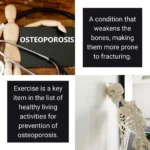
Exercise for your bones
Exercise is a key item in the list of healthy living activities for prevention of osteoporosis.
This is a very informative page on the Jean Hailes website with a comprehensive list.
Weight bearing exercise is what we must include – activities or sports that involve running and jumping.
Strength training – where we move the joints against resistance – is also vital.
Resistance can be added using exercise equipment like weights, bands or machines, and moving against our own bodyweight is also effective for strength training.
The science behind this is complex and I’m not an expert, but the simple explanation is that the combination of forces on bones during weight bearing exercise enhance bone density.
Avoiding falls
Having strong bones is awesome, but another great strategy for avoiding fractures is not falling over.
An added benefit of exercising for strong bones is that the muscle strength and balance gains contribute to prevention of falls for older people.
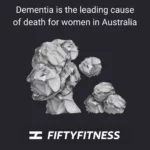
2. Dementia
Dementia is the leading cause of death for women in Australia.
Are you shocked? I was shocked to learn this fact.
The term dementia describes a group of conditions that affect brain function, Alzheimer’s disease is just one form of dementia.
The impairment to brain function impacts the ability of sufferers to live their daily life.
Brain functions affected include memory, judgement and thinking.
Exercise for your brain
Dementia Australia has put together this interesting information sheet about exercise and dementia.
Here’s the key message as I see it:
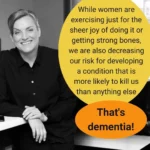
While women are exercising just for the sheer joy of doing it or getting strong bones, we are also decreasing our risk for developing a condition that is more likely to kill us than anything else.
More research is needed to establish why, but studies have shown a correlation between physical activity and reduced risk of dementia.

3. Coronary heart disease
The second leading cause of death for women in Australia is coronary heart disease, which is a consequence of blockage in the coronary arteries, the blood vessels that supply the heart.
Without adequate blood supply, the heart can’t perform its vital function of pumping blood around the body and brain.
This type of heart disease can cause a life-threatening event like a heart attack, and lead to chronic and debilitating conditions such as heart failure.
Heart disease is also a risk factor for developing dementia.
Exercise for your heart
That exercise is great for heart health is one of the best-known benefits of regular physical activity, in my opinion.
And there’s heaps of information out there about this. Like this informative page on the Heart Foundation website.
While exercise helps the heart directly by making it beat harder and faster – it’s a muscle after all – there are other benefits in the body that reduce our risk factors for chronic disease generally.
4. Stress
Perimenopause can be a time in women’s lives when there is a lot going on and plenty of sources of stress.
You may be at the top of your game at work with loads of responsibility or still striving to hit your career goals. Or maybe you’re like me and doing a mid-life career pivot, which I know is stressful.
The kids may be less dependent but caring and concern for aging parents might be increasing.
Caring responsibilities wrongly but overwhelmingly fall to women, as does carrying the major burden of managing the household.
Everything is important, takes time and can coalesce to result in stress.
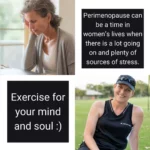
Exercise for your mind and soul
Most people have heard about endorphins which are hormones released during exercise, along with other chemicals that occur naturally in our bodies.
These substances are linked with good feelings like enhanced mood and general well-being.
Exercise is also a chance to take time out from our daily demands and the physical activity releases tension.
It can also be an opportunity to connect with others.
My advocacy for exercise is mainly related to this benefit, I do it primarily because it makes me happy.
These are just the top 4 critical benefits as I see them
There are many more reasons to get and stay active.
Start small and build gradually
The first step is prioritising yourself and allocating the time.
If you’re not doing any physical activity, start with going for a 10-minute walk.
I guarantee you’ll feel better afterwards and you can build from there.
Take your time, progress gradually and do things you enjoy – exercise should make us feel good.
Learn 6 ways to take the pressure off your pelvic floor while you exercise – FREE video series
Women over 50 face a big DILEMMA! It’s a critical time for us to be exercising for bone strength and health, but exercise can contribute to pelvic floor dysfunction. What on earth are we supposed to do?
With this informative video series, you’ll learn six easy strategies that will take the pressure down! You’ll feel confident to keep up your physical activity while taking care of your pelvic floor.
Every day for 6 days you’ll receive and email from me with a video of each strategy so you can learn them one at a time. On the 7th day I’ll send you an e-booklet with all 6 strategies collated in one handy resource that you’ll have forever.
The video series is ready – start learning the 6 strategies now!
https://bit.ly/TakeThePressureDown
Keep in touch
Please reach out to me if anything in this article resonates with you.
You can email me at kate@fiftyfitness.com.au or connect via social media.
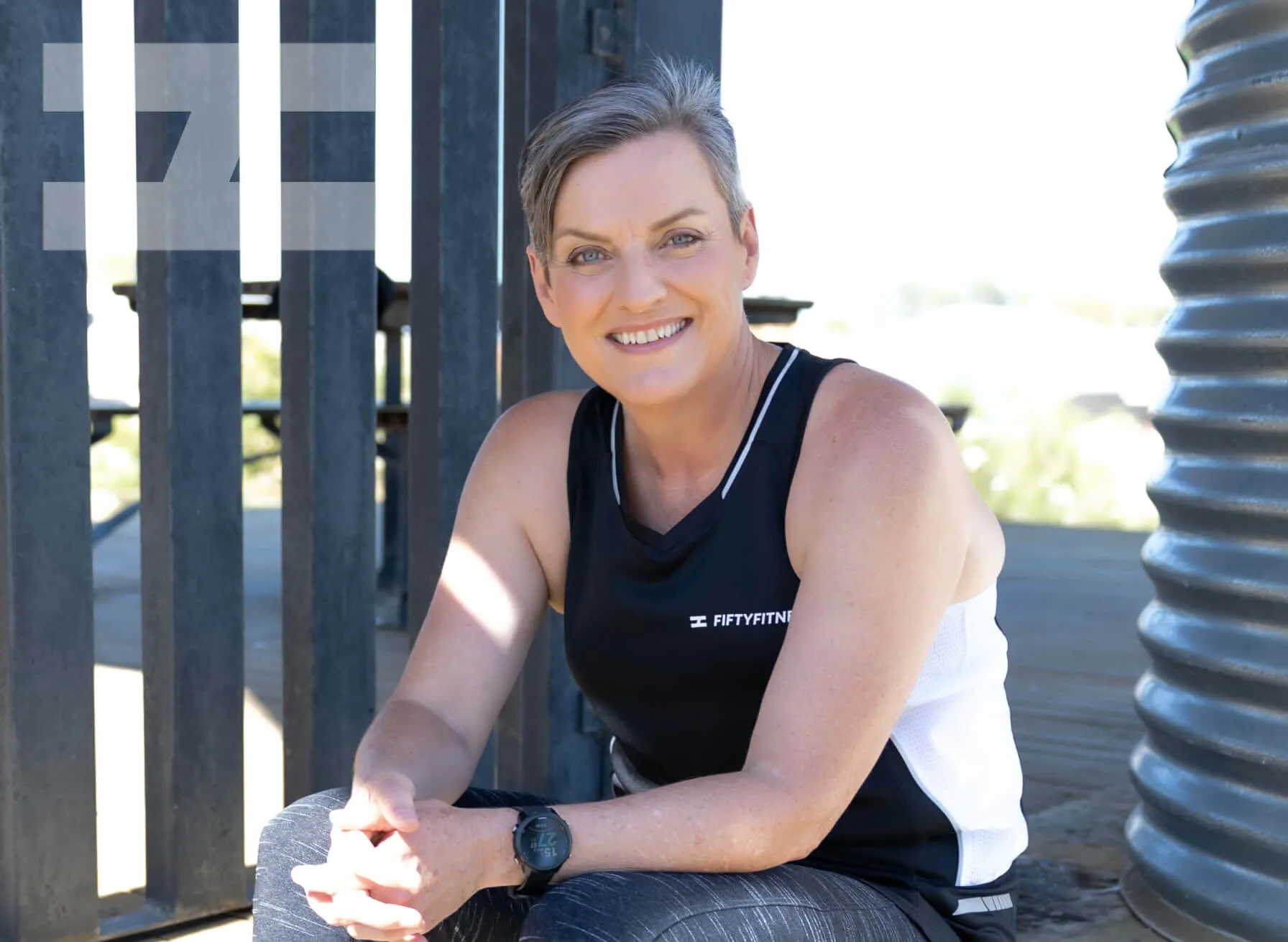
Subscribe now
Blog Subscription Form
A blog subscription form, used for the blog page and posts.
"*" indicates required fields